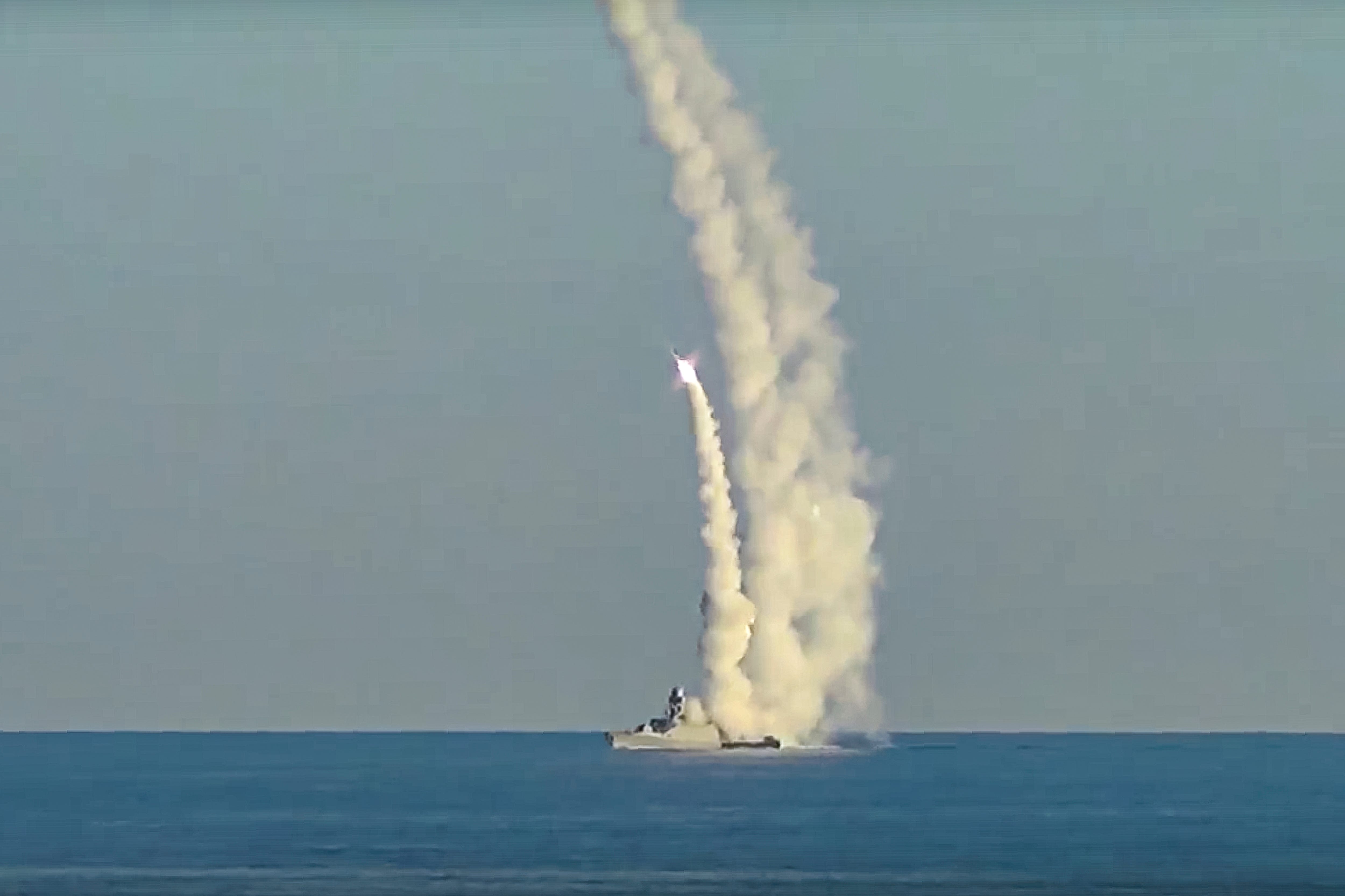
Russian Defense Ministry Press Service photo via AP, File
The UK ran a simulation of a Russian attack to see the strain on its air defenses if the invasion of Ukraine had been aimed at the UK instead, a senior air force official said.
The result “was not a pretty picture,” Air Commodore Blythe Crawford said at a Royal United Services Institute conference in London on Thursday.
Using Gladiator, a £24-million ($32 million) simulation system, the UK’s Air Battlespace Training Centre loaded up “Night 1 of Ukraine” — February 24, 2022 — and watched it play out against the UK, according to Crawford, the center’s former commandant.
He did not detail the exact outcomes of the simulation, which took place in 2022, but it’s understood that the UK’s air defenses were breached.
The simulation was a stark lesson, Crawford said.
“We’ve stood for years at the western edge of Europe feeling as though the rest of the continent has stood between us and the enemy,” he told those in attendance.
But “Ukraine has made us all sit up and that drove some of the work we were doing in the warfare center to get after how we would solve a problem like that if a similar scenario was pitted against the UK.”
Russia pummeled Ukraine with missiles during the opening salvo of its full-scale invasion.
The UK has improved its air defenses since 2022 and uses an approach that integrates aircraft, ships, and land-based systems — a network critical to defeating any attempt to land invasion forces in the UK.
There are also notable differences between how Russia attacked Ukraine and how it might challenge the UK’s air defenses, and — given that ground-launched missiles would need to pass through European airspace — if Russia were to attack the UK it might opt to mobilize its Northern fleet and launch an attack from the Atlantic.
Crawford also said that “over the last three years, the scenario has become much more complex, in terms of the types of systems that we need to be able to counter, but then also the mass as well.”
“When you see swarms of hundreds of drones now operating in Ukraine, some of them decoys, some of them with munitions on board, the challenge is how do you tackle them all or do you tackle them all?” he added. “That is a challenge we have right across the West.”
Crawford described Ukraine as a wake-up call, “where you have two countries with very capable integrated air defence systems going head to head, with neither side really achieving any form of air superiority, which has been a cornerstone of air operations for decades.”
He added that this had been made more complex by the rise of drones and autonomy, where you can have “swarms of several hundred munitions — not just drones but combined with rockets and ICBMs, at all levels and in all spheres.”
The concept of air superiority has significantly changed, he said. “We tended to think of it as theater-wide and something you achieved over time. Now we see air superiority being from trench to trench and from zero to 50 feet, rather than necessarily being something that’s done right across the theater.”
While the attack on the UK that Crawford described was just a simulation, he said that Western countries need to learn from what is happening in Ukraine, and can’t assume their home bases are safe.
“We in the UK over the last few decades have become focused on being garrison safe and making assumptions that we are safe to operate from the home base because most of the wars we’ve been fighting have been overseas. We need to reverse that thinking and assume that from here on, we’re under threat in the home base now as well.”
The post The UK simulated an attack on its own air defenses based on the first night of Russia’s invasion of Ukraine. It wasn’t pretty. appeared first on Business Insider.




